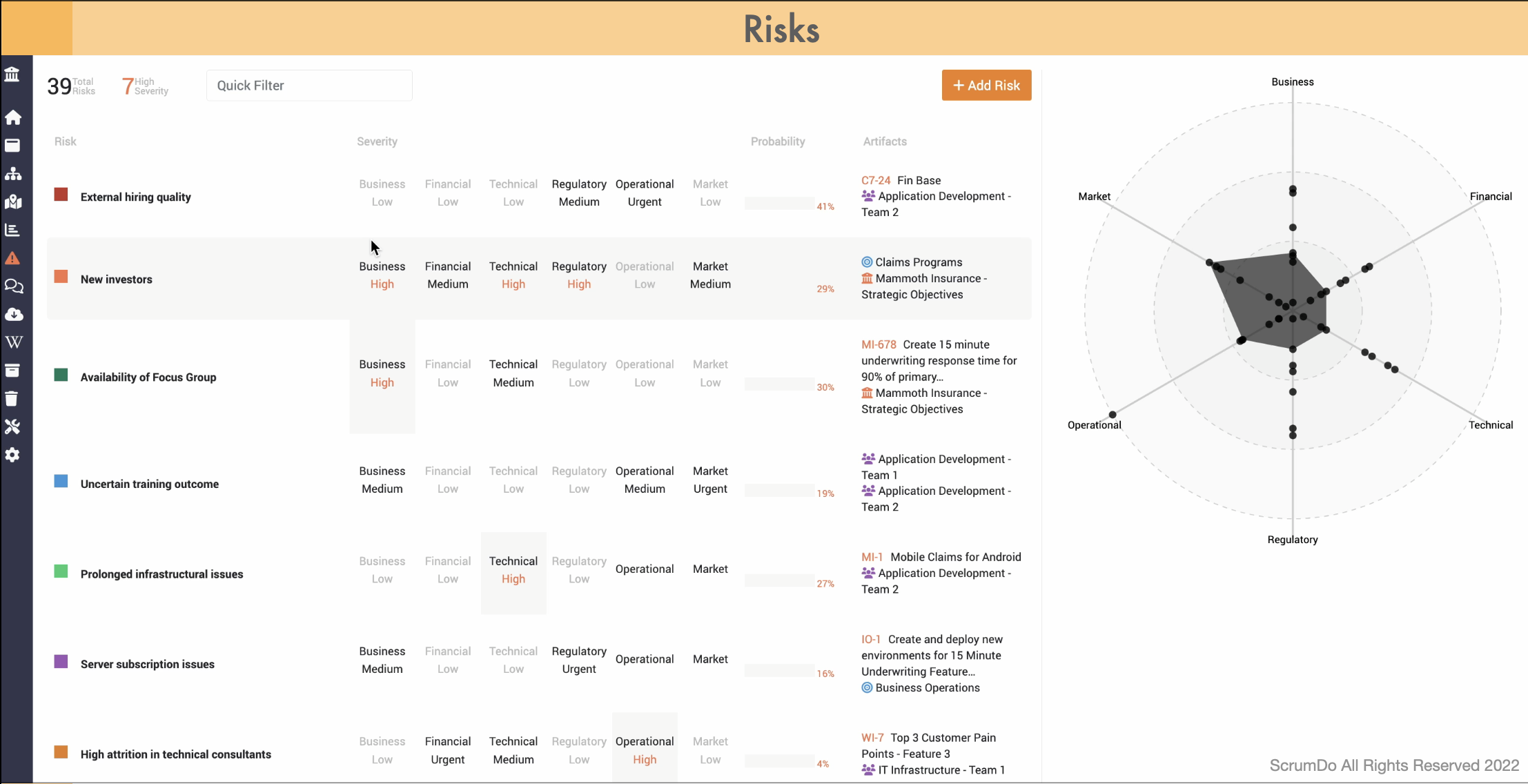Company name
Rocky Beginnings
Mammoth Insurance’s first attempt at Agile came during January of 2015, when it hired an external consultant to deliver training and follow up coaching. Neither the courses or later support were well received; the consultant was soon fired and the Sunrise program leadership were left with a very poor first impression of Agile.
ScrumDo was selected to continue the adoption of Agile by Sunrise, which quickly ran into limitations of Mammoth Insurance’s technical practices. Specifically Mammoth Insurance’s approach to testing software relied on traditional manual QA. Such test-last practices are widely proven to increase lead times, batch sizes, and increase the cost and time to remedy defects. ScrumDo presented Agile testing approaches, which were adopted as a strategy. In a decision that would become a hallmark of Mammoth Insurance's reaction to encountering challenges that may have been too ambitious to solve, an external vendor was retained to create a testing strategy. The resulting 130 page text document found its way onto the program Sharepoint site, where its recommendations could sit unfollowed.
Company name
As the program’s immense complexity continued to be revealed, documentation grew as well; a first sign of the Agile value of working software over comprehensive documentation being inverted. The Lean Startup concept of Minimal Viable Product is a powerful strategy to mitigate risk by identifying and as quickly as possible delivering for real customer feedback a scaled back solution. While MVP has become a buzzword in most software development circles, a deep understanding of how and why to define one often remains elusive. Certainly within Sunrise, decision makers continued to build out massive process flows to capture “system requirements” defined by system functionality, rather than valuable user features. On a side note, by the time the implementation phase of the project launched, the small discovery team needed an entire 5 days’ time to present their process map flows, which was termed a knowledge transfer; looking around the room, where attendance dropped noticeably day to day; thus it was obvious the intended knowledge was not being transferred.
In parallel to Mammoth Insurance’s internal subject matter experts mapping extensive business processes, the discovery phase sought to determine the degree of required functionality already existing in the selected vendor’s product. In another powerful example of working software over comprehensive documentation being ignored, the assessment was carried out exclusively through documentation artifacts. At no time was the software itself demonstrated, or even basic tasks attempted. While those making these decisions could not know the severe implications, as Agile Coaches, ScrumDo attempted to raise these issues as they were detected. However, not only were the coaches prevented from interacting directly with senior decision-makers, they were not able to participate in what feedback loops did exist. The overall effect was of an echo chamber, where only information that fit the assumptions was gathered.
As the discovery phase continued, ScrumDo was able to establish an alliance relationship with senior executives who could influence the Sunrise program.
As the year end approached and the Sunrise program prepared to transition from discovery to implementation, it was becoming clearer to decision makers that the size of the program, being substantially larger than any in Mammoth Insurance’s history, might be problematic. With ongoing relationship building, the ScrumDo lead Agile coach was able to exert influence toward some powerful wins: creation of Agile contracts with vendors, which allowed for a learning phase and affiliated option to exit the contract. Senior leadership at this time also participated in a Kanban training and were exposed to critical ideas including managing for flow efficiency rather than people utilization, and the importance of limiting work in progress to enable flow through a system.
Company name
To set the stage for success, program leadership wanted to embrace the common Agile practice of cross-functional teams capable of delivering work with minimal dependencies. It was decided that there would be four Scrum teams consisting of Mammoth Insurance employees drawing from two locations in the US, vendor employees working as team members in the States, and vendor employees based in India. To support these “vertical” teams, there would be a collection of “horizontal” teams with specific domain expertise such as architecture and release management that would be needed in all the teams. In a planning document, this arrangement made sense, though like many decisions was based on assumptions and risks that had not been verified.
The last stage of the year was to add two additional Agile Coaches to begin designing immersive training sessions for project Scrum teams, with an emphasis on product backlog creation and refinement. User Story Mapping was identified as a tactic fit for the context and a 5-day session split between training and backlog refinement was decided on.
With the beginning of the new year, the Sunrise program shifted from discovery to implementation. Like many organizations, Mammoth Insurance operates on an annual fiscal model, and from an accounting perspective requires its efforts to fit into this cycle. Knowledge work at the scale and complexity of Sunrise, however, has a tendency to have little regard for calendars and even master-planned schedules.
